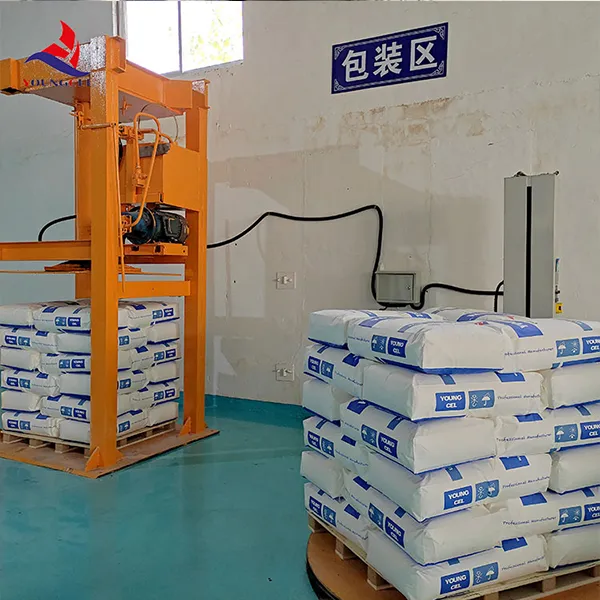The Versatile World of Cellulose Nature's Remarkable Polymer
Cellulose is one of the most abundant organic polymers on Earth, constituting the fundamental structural component of the primary cell wall of green plants, algae, and certain bacteria. Composed of linear chains of D-glucose monomers linked by β(1→4) glycosidic bonds, cellulose not only provides structural integrity to plants but also plays a crucial role in various ecological and industrial processes.
Nature's Building Block
Cellulose fibers are known for their impressive strength and rigidity, which enable plants to grow upright and withstand various environmental challenges. This toughness is crucial for plant survival, allowing them to thrive in diverse habitats from dense forests to arid deserts. In nature, cellulose is synthesized by the enzyme cellulose synthase and assembled into microfibrils, which are further organized into macroscopic fibers. These fibers give wood, cotton, and other plant materials their characteristic properties.
The abundance of cellulose in the plant kingdom has also made it a significant source of nutrition for certain organisms. Herbivores, such as cows and goats, possess specialized digestive systems and symbiotic microorganisms that help break down cellulose into simpler sugars, making it a vital energy source.
Cellulose in Industry
Beyond its role in nature, cellulose has multiple applications across various industries. The most prevalent use of cellulose is in the textile industry, where it is transformed into cotton fabric and other fibers like rayon and lyocell. These materials are prized for their breathability, absorbency, and softness, making them staples in clothing and home textiles.
The food industry also benefits from cellulose, as it serves as a dietary fiber that aids in digestion and promotes gut health. Furthermore, cellulose derivatives, such as carboxymethyl cellulose and microcrystalline cellulose, are widely used as thickening agents, stabilizers, and anti-caking agents in processed foods.
celulosa

In the realm of pharmaceuticals, cellulose is a critical excipient in tablet formulations, providing bulk, stability, and release control of active ingredients. Its biocompatibility and eco-friendliness make it a preferred choice for developing drug delivery systems and other biomedical applications.
Environmental Perspective
As the global population continues to grow, the sustainable utilization of cellulose becomes increasingly important. Since cellulose is biodegradable, it presents an environmentally friendly alternative to petroleum-based products. Research is ongoing to explore the potential of cellulose in producing biofuels, bioplastics, and other sustainable materials that can reduce our reliance on fossil fuels and mitigate environmental damage.
Moreover, the recycling of cellulose-containing materials, such as paper and cardboard, plays a crucial role in waste management and resource conservation. By reusing cellulose, we can significantly reduce the environmental footprint associated with raw material extraction and production processes.
The Future of Cellulose
The future of cellulose seems promising as researchers continue to uncover its versatile applications. Innovations in nanocellulose, derived from the breakdown of cellulose fibers into nanoscale structures, are garnering attention due to their strength and lightweight properties. Nanocellulose is being explored for uses in electronics, packaging, and even in the development of advanced composite materials.
In the context of climate change, cellulose offers a pathway for sustainable development. With ongoing advancements in biotechnology, scientists are working to enhance the efficiency of cellulose production, optimize its properties, and find novel uses that can contribute to a circular economy.
In summary, cellulose is not just a fundamental component of plant life; it is a valuable resource with far-reaching implications for industry, health, and the environment. Its versatility and sustainability make it a subject of growing interest, promising innovations and solutions for the challenges we face today. As we continue to harness the potential of this remarkable polymer, cellulose stands as a testament to nature's ingenuity and a beacon for a sustainable future.
-
The Application and Significance of Construction RdpNewsMay.19,2025
-
Industrial Grade HpmcNewsMay.19,2025
-
Building Coating Adhesive Building Coating Adhesive HpmcNewsMay.19,2025
-
Application Of Hpmc For Detergent For Detergent In DetergentsNewsMay.19,2025
-
Application Of Hpmc Cellulose In Cement-Based MaterialsNewsMay.19,2025
-
Application Of High Quality Hpmc For Construction In The Field Of ConstructionNewsMay.19,2025




